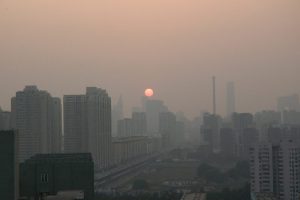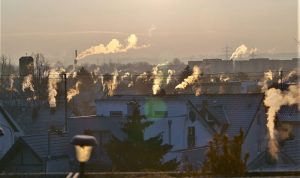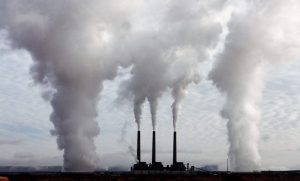Environmental pollution
Environmental pollution is the process by which land, water, air or other parts of the environment become dirty and unsafe or unsuitable for use or as a means of habitat for populations. Pollution arises when a pollutant is introduced into a natural environment. Things as simple as light, sound and temperature can be considered pollutants when they are introduced artificially and in high proportions into an environment. Toxic pollution affects more than 200 million people worldwide, according to Pure Earth, a non-profit environmental organization. In some of the places around the world where pollution rates are extremely high, babies can be born with birth defects and life expectancy can be so low that it can reach the age of 45 years because of cancers and other pollution-related diseases.
What is environmental pollution?
It is the introduction into the environment of a series of physical, biological or chemical agents that produce a series of alterations that affect health, well-being and habitats of animal and plant life that inhabits the planet.
Causes of environmental pollution
There are many causes that can produce environmental pollution, taking into account that any agent that is in high concentrations could contaminate an environment by altering its structure and function. Among the most common causes we can mention:
- Chemical pollutants: These are compounds derived from chemical industry, such as toxic products, acids, detergents, petroleum derivatives and pesticides.
- Physical pollutants: Within this group, we can mention heat, fire, radioactivity.
- Biological pollutants: These are all those organic wastes that, when decomposed in the soil, ferment and produce damage. For example, factory waste, excrement, sawdust, etc.
- Radioactive Contamination: The type of pollution derived from radioactive materials such as uranium that is used in hospitals and research institutions, submarine wastes and artificial satellites.
- Thermal pollution: The high temperature produced in the water that reduces its solubility.
Sources of environmental pollution
The main sources of pollution in the environment are:
- Automobile traffic.
- The combustion that occurs in different types of factories and boilers that generate constant combustion in their furnaces, and the wastes that are produced as a result of these gases are composed mainly of CO, CO2 and H2O, sulfur compounds and coal.
- Burning of fuel by cars that produce CO2.
- Industrial
- Mining
- Hazardous waste from hospitals and factories.
- Pollution from loud sounds that affect the lives of people around you.
Effects
There are many different effects that environmental pollution has, both in the long and short term for residents’ health. The increase in the number of respiratory diseases, lung cancer and heart disease are some of them. Among the most vulnerable groups suffering the effects of pollution are young children, older adults, low-income families and those who are already ill. Pollution has caused a great deal of damage to ecosystems and human daily life through human progress and action. At the same time, flora and fauna also suffer from pollution and for this reason many of them are in danger of extinction.
Consequences
The consequences that environmental pollution brings to human beings are mainly due to the emission of toxic gases. These causes strong eye and respiratory tract irritations because smoke and dust particles enter the body and lodge in the lungs. In the climate and the environment, environmental pollution produces CO2 that affects the greenhouse phenomenon. Finally, the consequences on flora and fauna are serious, and this is reflected in animals’ growth, which can even lead to species extinction.
Prevention of environmental pollution
Some of the simplest methods to prevent environmental pollution are:
- Reduce the gases caused by cars.
- Save energy.
- Use products that are friendly to the environment and the garden.
- Do not use aerosol scent spray to sprinkle on homes or offices.
- Recycle and use recycled products.
- Plant new trees.
Types
The types of pollution are classified according to the part of the environment they pollute or affect. The main ones are: water, air, soil, thermal, acoustic, light and radioactive.
Examples of environmental pollution
The noise generated by cars, businesses and places where music has high volume levels are an example of noise pollution. A clear example of water pollution is when ships have fuel spills in the ocean, causing the death of many aquatic species. The smoke produced by some factories and the different aerosols used in homes are examples of air pollution.
How to cite this article?
Briceño V., Gabriela. (2019). Environmental pollution. Recovered on 23 February, 2024, de Euston96: https://www.euston96.com/en/environmental-pollution/










